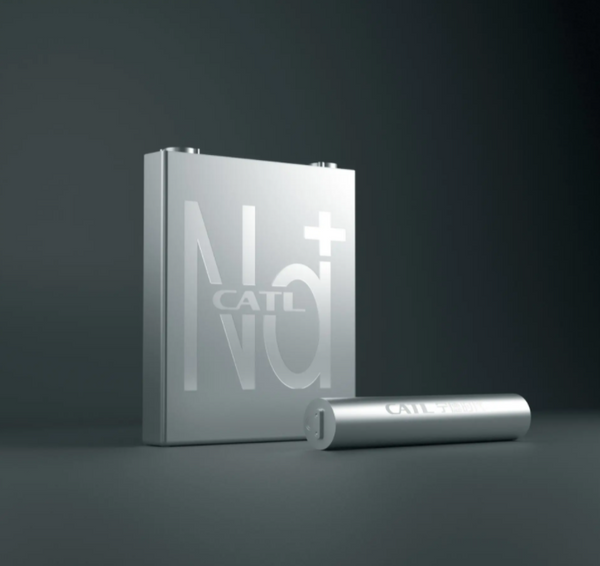In an experimental sodium-ion battery technology, a vial of clear sodium-ion electrolyte provides the circulating "blood" that keeps ions and energy flowing.
Researchers at the Department of Energy (DOE) have achieved a major breakthrough they believe may be the solution by which sodium-ion batteries could be a viable replacement for lithium-ion batteries.
The Department of Energy's Pacific Northwest National Laboratory (PNNL) has tweaked the composition of the liquid cores of sodium-based storage devices to dramatically extend their lifetimes and address performance issues that have plagued them so far.
"Here, we show in principle that sodium-ion batteries have the potential to be a durable, environmentally friendly battery technology," said one of the lead researchers, Jiguang Zhang. The paper was published in the journal Nature Energy.
Scientists have long viewed sodium-ion batteries as the best option to replace lithium-ion batteries in the future, for a few reasons. Sodium, in abundance, is far cheaper, more accessible, and more ethically mined than lithium, an expensive and finite resource that is exploitatively extracted in underdeveloped parts of the world.
Sodium-ion batteries are also likely to maintain a high capacity of energy at any given weight and volume, while lithium-ion batteries can get heavier as energy density increases, making sodium-ion batteries replacing lithium-ion batteries less likely, the researchers said. more attractive.
battery stability
Specifically, the PNNL team used the battery's liquid electrolyte, which is formed by dissolving salts in a solvent. The electrolyte is the part of the battery where charged ions flow between the positive and negative electrodes. Any battery becomes sluggish over time, which limits the number of times a device can be recharged and still remain charged for optimal function.
A major disadvantage of sodium-ion batteries is that the charge decays faster than lithium-ion batteries, which would hinder their viability as a commercial replacement for lithium-ion batteries.
Led by scientists Yan Jin and Phung Le, the PNNL team tackled this problem by creating a new electrolyte formulation that switches the liquid solution and the type of salt flowing through the battery to address a key issue that typically arises in this part of the device question.
The electrolytes currently used in sodium-ion batteries tend to dissolve the protective film on the anode or negative electrode in the device. The protective film is a critical part of the battery because it allows sodium ions to pass through the anode while maintaining battery life.
To solve this problem, the researchers stabilized the protective film of the anode while adding an ultrathin protective layer to the cathode (positive electrode). According to the researchers, their improvements to the device made the battery more stable overall, maintaining 90 percent of its battery capacity after 300 cycles at 4.2V in experimental tests.
Although sodium-ion batteries have higher performance than previously developed sodium-ion batteries, they are not yet on a par with lithium-ion batteries. However, the researchers say this is one of the most promising efforts yet to advance sodium-based battery design.
High voltage performance
The battery developed by the PNNL team also demonstrated an improvement over current lithium-ion battery designs in the ability to operate at high voltages, which have been a challenge. In fact, lithium-ion designs can short-circuit and even fire when their energy density is too high, which is one of the key reasons why scientists are looking to replace them.
On the other hand, the new sodium-based battery uses a natural extinguishing solution that is not affected by temperature changes and can operate at high pressures, the researchers said. The ultrathin layer formed on the anode is the key, providing overall device stability.
The researchers said they also measured the amount of cathode gas vapor produced and found that the amount produced was extremely small. This will provide new ideas for scientists to develop stable electrolytes for sodium-ion batteries that work at high temperatures.
The PNNL team aims to continue its work by improving current battery designs and conducting trials with other companies to reduce and possibly eliminate the use of other problematic materials commonly used in batteries. One of them, they say, is cobalt, which is toxic and expensive if not recycled or recycled.

